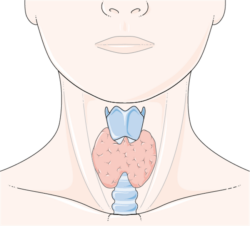Cuddling and snuggling
essential part of our diets
often neglected.
My husband and I conduct a daily morning ritual. We cuddle. It is quite simply the underpinning of our lovely relationship. Yup, you heard me right. Cuddling is the secret sauce to getting on well (and occasionally leads to getting it on well, as well). We even set our alarm 15 minutes early to allow time for this ritual. And on the rare mornings we miss a cuddling session, something seems off the rest of the day for both of us.
I’m not sure how or why, but we’ve jokingly come to refer to this time we carve out for each other as the “four stations of the cross” (there are four cuddling positions in our sequence). Perhaps part of it is that cuddling gets to the sacred ground that is intimacy. In addition to feeling sooo good–having all this skin on skin and stroking and holding and scratching each other’s backs– cuddling feeds and sustains our relationship somehow. Mary Oliver puts words to this simple practice in her poem Wild Geese “You do not have to walk on your knees. For a hundred miles through the desert, repenting. You only have to let the soft animal of your body love what it loves.”
As is true of so much we experience, there is a hormonal explanation for why cuddling works. It has to do with an all-powerful hormone oxytocin. It is not only released in response to intimacy and labor, women also have oxytocin to thank for promoting mother-child bonding and let-down when it’s feeding time. In addition, oxytocin:
- Increases sexual receptivity and counteracts impotence.
- Creates feelings of calmness.
- Bonding – establishes a sense of connection.
- Reduces stress.
- Increases immunity to repair, heal, and restore faster.
- Faster wound healing.
- Lowers blood pressure.
- Protects against heart disease.
- Reduces cravings and addictions.
- Eases depression.
Now there is an additional and surprising benefit.
Last week the Journal of Neuroscience published scientific evidence of what my husband and I have discovered experientially. Contrary to their hypothesis, neuroscientists at the University of Bonn in Germany found that men in monogamous relationships who when administered synthetic oxytocin put a little extra space between themselves and an attractive woman they’d just met. More predictably, single heterosexual men, when administered the oxytocin substitute, put themselves 6-1/2” closer to an attractive woman than those men in monogamous relationships.
Scientists have long believed that boosting oxytocin in the human brain promotes indiscriminate trusting, friendly behavior. Based on the new findings, researchers speculate that oxytocin has a more discriminating role in human interaction. Paul Zak, founding director of Claremont Graduate University’s Center for Neuroeconomics Studies, said the new findings even provide us some evidence that “our brains evolved to form long-term romantic relationships.”
I’m not the least bit surprised researchers have found scientific evidence that oxytocin has more subtle effects than previously thought, and is a key ingredient to a stable relationship. After all, if you and your partner are leaving the house every morning chock full of the stuff, what reason would you have to stray from that relationship!?
Putting this all in context, after being bombarded with news stories about infidelity in public life, and plenty of evidence during the recent political season that humans (especially men) are devolving, both men and women have something to be optimistic about when it comes to monogamous relationships. It merely requires setting your alarm clock 15 minutes earlier. Cuddling is something that feels good and has multiple health and relationship benefits too. So go ahead. Try it and do let us know how it works out for you and your relationship.
Source: “Oxytocin Modulates Social Distance between Males and Females“
Dirk Scheele1,*, Nadine Striepens1,*, Onur Güntürkün2, Sandra Deutschländer1, Wolfgang Maier1,4, Keith M. Kendrick3,†, and René Hurlemann1,†
Journal of Neuroscience, November 2012











